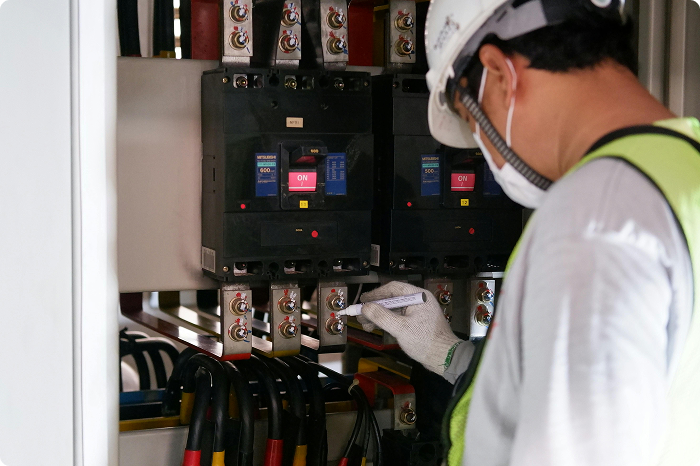The Ultimate Guide to Power Surge Protection: How to Safeguard Your Home
By Jose Donnelly · Jul 25, 2025

Power surges can cause significant damage to your home's electrical devices, potentially costing you thousands of dollars in repairs and replacements. By understanding surge protection and employing effective power surges protection strategies, you can safeguard your valuable appliances and ensure the longevity of your electrical systems. In this comprehensive guide, we'll delve into the causes and effects of power surges, the types of surge protection available, and the best practices for implementing power surges protection in your home.
What is a Power Surge?
A power surge is a sudden increase in voltage that exceeds the standard voltage level of an electrical circuit. In most homes, the standard voltage is 120 volts. When the voltage spikes above this level, it can cause serious damage to your electrical appliances, potentially frying their internal circuits and rendering them useless.
Common Causes of Power Surges
- Lightning Strikes: A lightning bolt striking near a power line can cause a surge that travels through the electrical grid and into your home.
- Power Outages: When power is suddenly restored after an outage, the initial influx of electrical energy can create a surge.
- Electrical Overload: Plugging too many high-wattage appliances into a single circuit can cause an overload, leading to a surge.
- Faulty Wiring: Damaged or exposed wiring can result in intermittent spikes in voltage.
- Large Appliances: Devices like air conditioners and refrigerators can cause minor power surges when they cycle on and off.
Why Surge Protection is Crucial
Surge protection plays a vital role in mitigating the risks associated with power surges. By diverting excess voltage away from your home's electrical system, surge protectors help prevent damage to sensitive electronics and appliances.
Types of Surge Protection
-
Point-of-Use Surge Protection
- Surge Protector Strips: These are commonly used to protect specific devices and appliances. They plug directly into wall outlets and offer a simple way to safeguard electronics like computers, TVs, and gaming consoles.
- UPS (Uninterruptible Power Supply): A UPS not only provides surge protection but also supplies backup power during outages, ensuring that critical devices like computers and routers remain operational.
-
Whole-House Surge Protection
- Surge Protective Devices (SPDs): Installed at your home's main electrical panel, SPDs provide comprehensive protection against large surges, such as those caused by lightning strikes.
- Secondary Panel Surge Protectors: These protect specific branches of your electrical system, offering an additional layer of security.
Key Benefits of Surge Protection
- Prevents Damage: Effective surge protection prevents costly damage to your appliances and electronics.
- Enhances Safety: By reducing the risk of electrical fires, surge protectors contribute to overall home safety.
- Improves Longevity: Protecting your devices from power surges prolongs their lifespan, saving you money in the long run.
How to Implement Surge Protection in Your Home
Step 1: Evaluate Your Needs
Identify the appliances and devices in your home that would benefit most from surge protection. Make a list of high-value electronics, such as computers, TVs, home entertainment systems, and kitchen appliances.
Step 2: Choose the Right Equipment
Select the appropriate type of surge protection for each device. For high-value electronics, use point-of-use surge protectors. For whole-house protection, consider installing an SPD at your main electrical panel.
Step 3: Professional Installation
While you can easily install point-of-use surge protectors yourself, whole-house surge protection should be installed by a licensed electrician. They will ensure that the SPD is correctly connected to your electrical panel, providing optimal protection.
Step 4: Regular Maintenance
Surge protectors can wear out over time, especially after multiple surges. Periodically check your surge protectors for signs of wear and replace them as needed. For whole-house systems, have an electrician inspect the SPD during routine electrical maintenance.
Best Practices for Power Surges Protection
- Unplug Devices During Storms: If you know a storm is coming, unplug your appliances to protect them from potential surges caused by lightning strikes.
- Use High-Quality Surge Protectors: Invest in surge protectors with a high Joule rating for better protection and longer service life.
- Limit the Number of Devices Per Protector: Avoid overloading a single surge protector with too many devices, which can reduce its effectiveness.
- Educate Your Household: Make sure everyone in your home understands the importance of surge protection and the proper use of surge protectors.
Conclusion
Power surges can cause extensive damage to your home's electrical systems, but with the right surge protection strategies, you can prevent this from happening. Implementing both point-of-use and whole-house surge protection systems is essential for safeguarding your valuable electronics and appliances. Regular maintenance and smart practices will ensure that your surge protectors remain effective over the long term.
For expert advice on installing surge protection, or to find a reliable electrician, visit HouzTask AI to ask your questions or use our Find a Pro service to locate skilled professionals in your area.
Need help?
Let HouzTask help you diagnose the issue or connect with a trusted local pro — in minutes.
Get Started with HouzTask